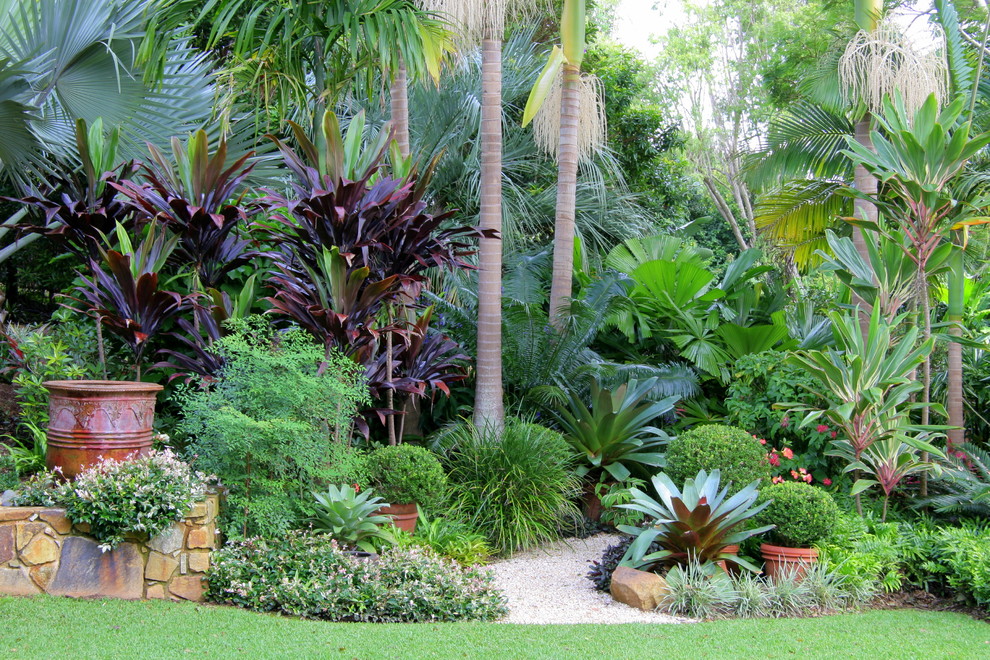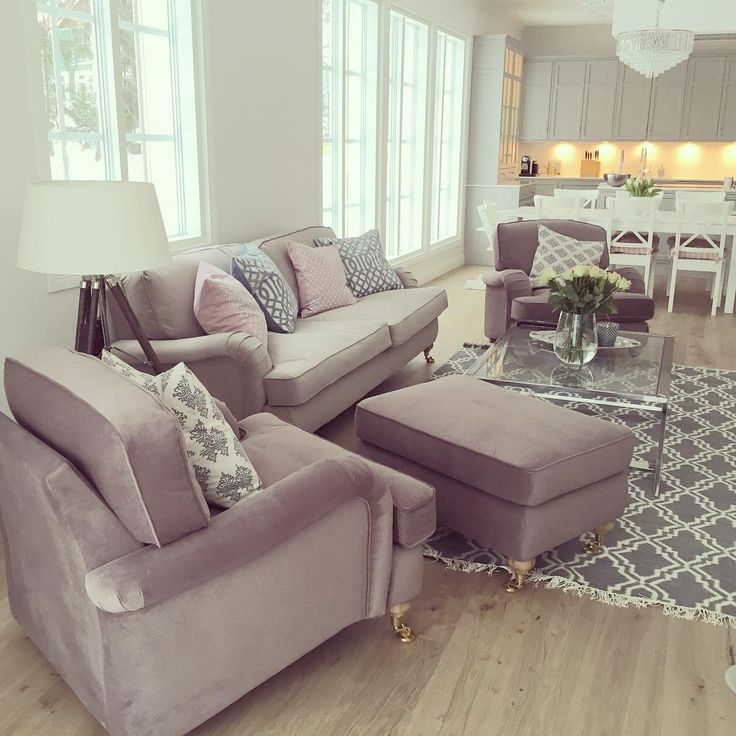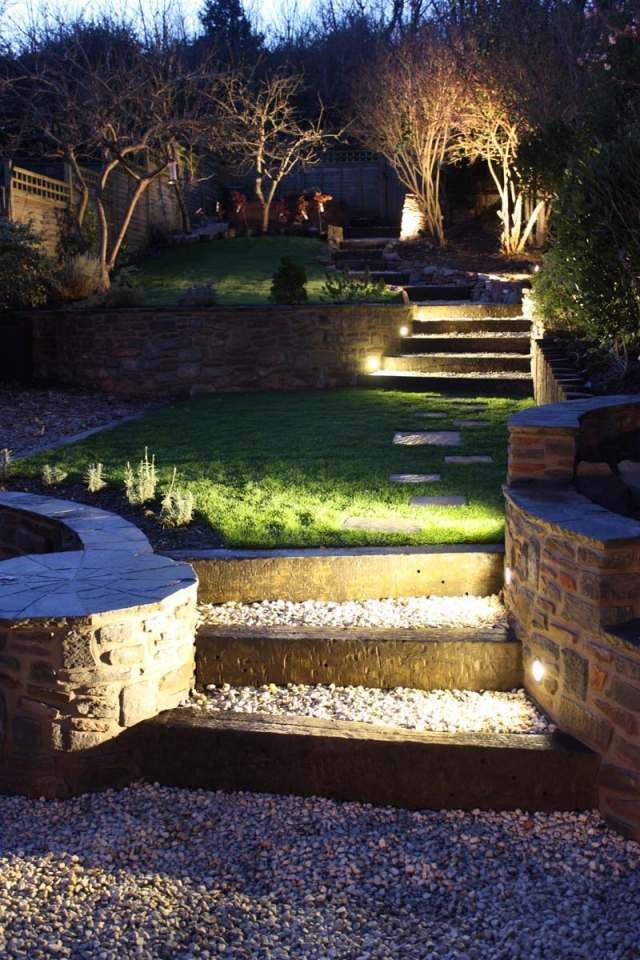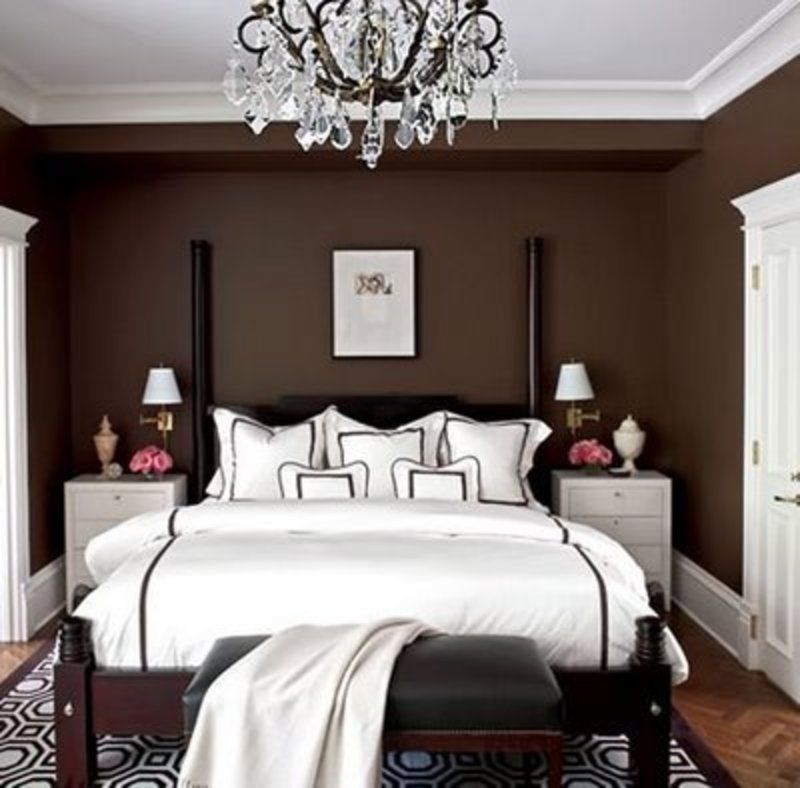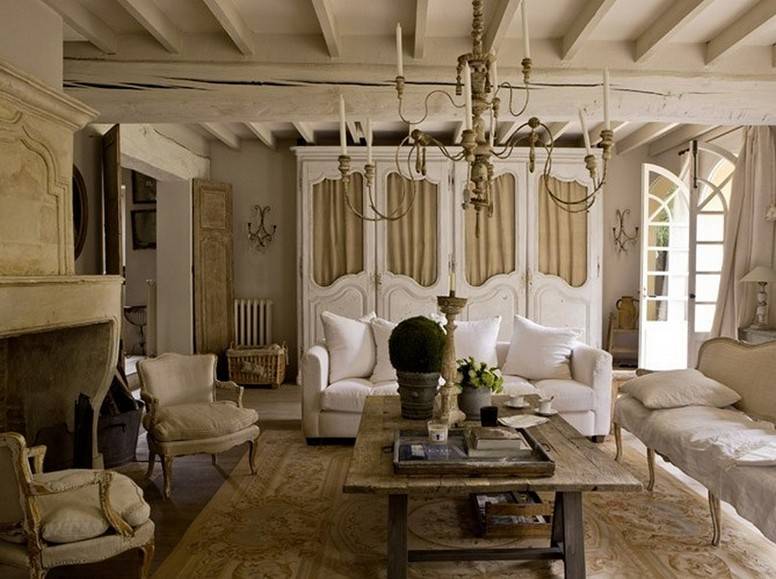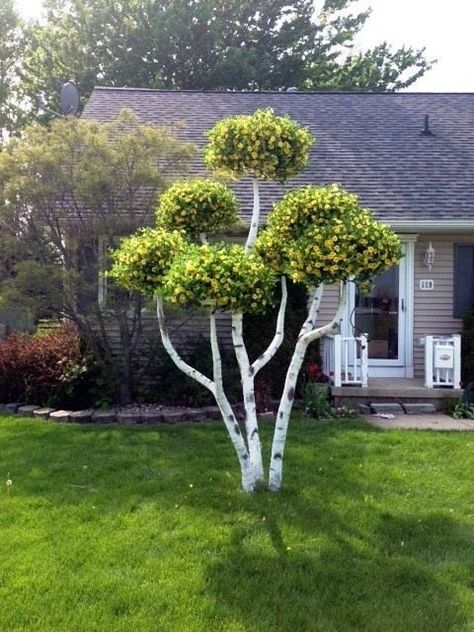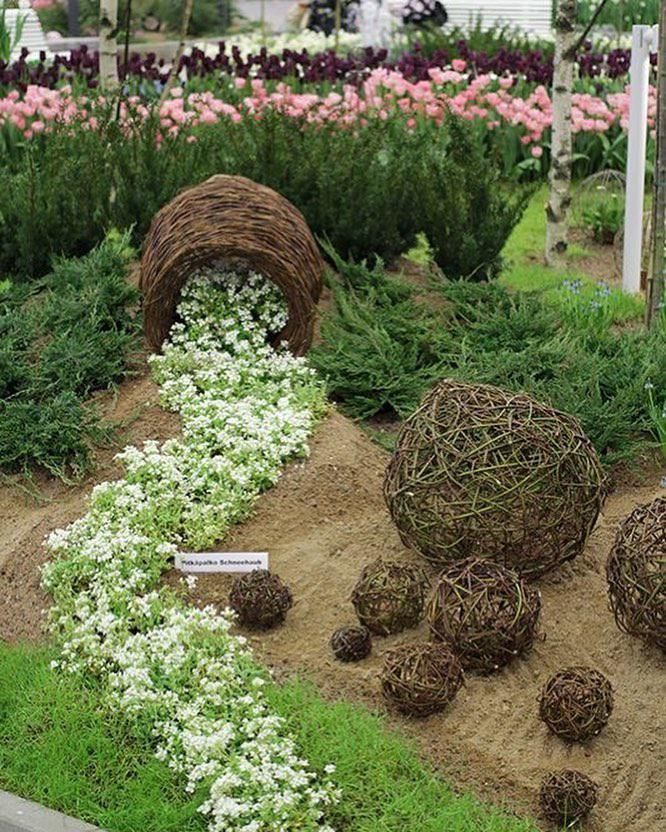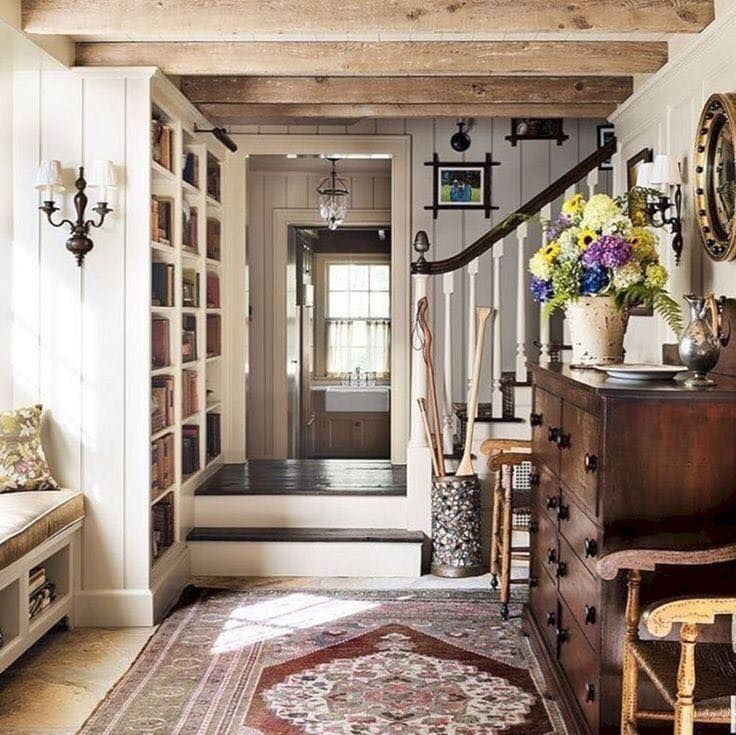How to build a tropical garden
10 Easy Steps to Make Your Dream Tropical Garden a Reality
It’s no wonder why many people want to have a tropical garden. Whenever you hear someone referring to a garden with this style, your mind will instantly be enveloped with a romantic and exotic place that looks very much relaxing and inviting as well.
When we look at a tropical garden, we feel like it needs high maintenance, which is wrong. A garden like this would need very low attention if (and only if) you do this with proper planning.
Planning isn’t just about designing the look of your garden but also includes selecting the kind of plants that you would choose; they must be low maintenance but should still play the part in beautifying the garden.
I’m sure, if you have seen a tropical garden or a home with a tropical landscape, you will be very much inspired to have one of your own. And with this tips, you are a few steps away from your dream tropical garden.
1. Check your area’s climate and soil type.
This is a number one consideration because not all tropical plants would grow in a certain type of climate. There are some that thrive best on hot places while there are also others that can tolerate mild winters.
If your area has winter seasons, plant delicate ones on a pot and then plant them on the ground with covered mulch. When winter comes, bring them indoors.
You have to consider the amount of light that each plant variety will receive too because some plants like orchids prefer filtered light. Also, don’t forget to check the soil type because not all plants thrive on a certain type of soil.
2. Plan the layout and design of the garden.
Lencom Pty Ltd
Take a look at your space and get your pen and paper or use some software in designing the landscape. Take note of existing structures and trees. Instead of chopping down trees, surround it with plants and make it as one of the highlights of your landscape especially if it is a huge tree.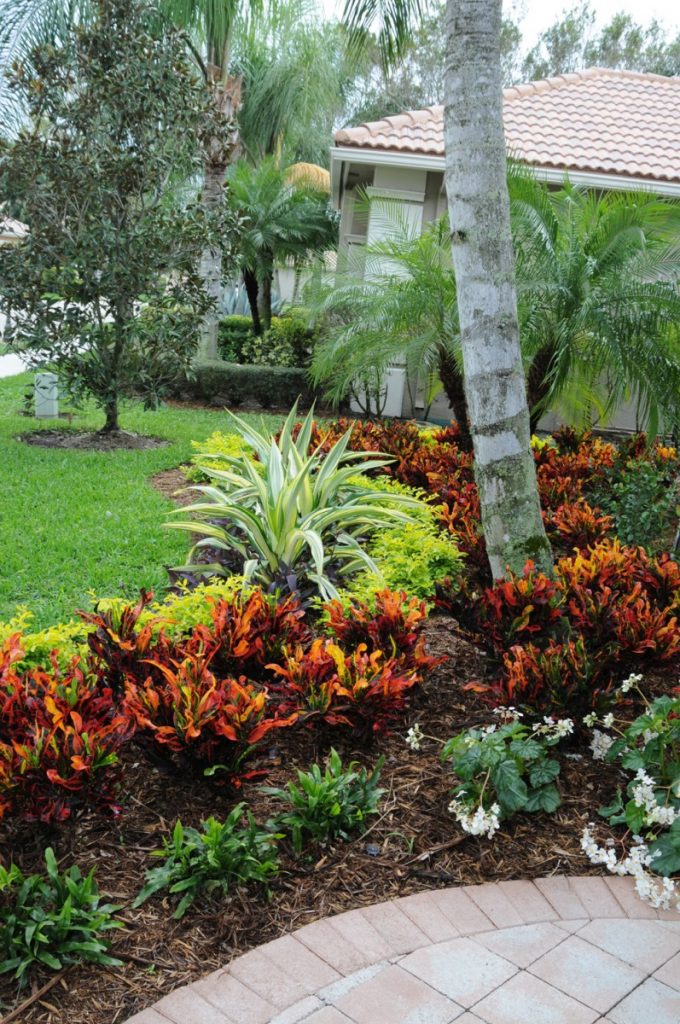
You can fit in other amenities into it like a pool, outdoor dining area, and others. Don’t forget the walkways and pathways too.
3. Hunt for inspiration.
Rick Ryniak Architects
If you are running out of ideas on what to do with your garden, the internet has so much to show you. Look for some existing tropical gardens and get some idea from it that you can apply for your garden. You might even see some plants there that you want to use. It is okay to take a look at other’s design. This will be a huge help for you.
4. Establish a shade cover.
Vacation Homes of Key West
This is important especially to areas that are hot and dry. Of course, the best shade is a big tree. The shade of the tree could aid the growth of other plants that aren’t tolerant to much heat. Some may even place a bench under it with surrounding plants.
I know you think of a pergola or some structure too to provide shade but for a tropical garden, trees will look and work best.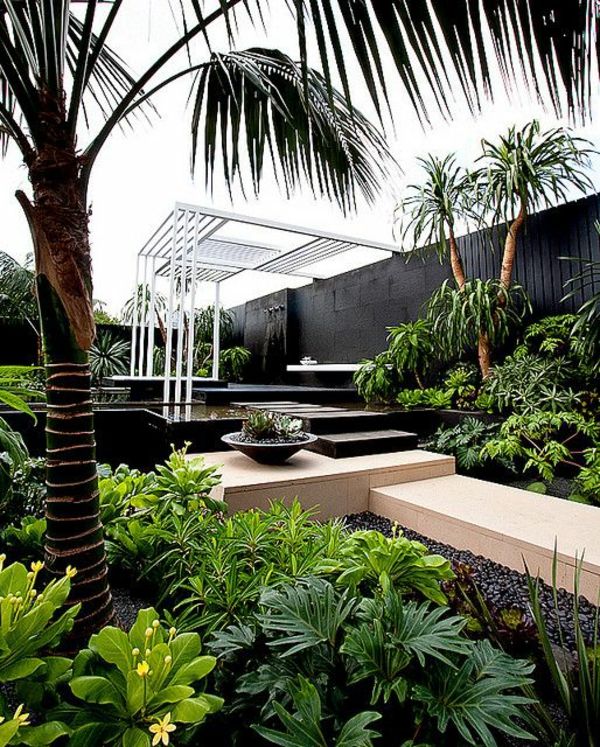
5. Fill the area with plants.
Ahbl Land Arch
Yes, lush foliage is very important for a tropical garden.
Remember that it mimics the look of a natural forest where plants just grown everywhere and anywhere. So instead of grouping plant species here and there, allow them to live together overlapping each other or even climbing on top of the other.
Density is essential for a tropical garden.
6. Go for large leaves.
impressionslandscape.com
Since we talked about adding more density to your garden, don’t just stick with ferns and other shrubs. Get some plants that have bold and big leaves. This will add to the tropical feel of the area.
Plants that have large leaves have beautiful colors and distinct shapes which will surely add more style to your garden. You can go for hardy bananas. They aren’t that hard to find.
7. Add bright tropical flowers.
Grants Gardens
The more exotic the flowers are, the better.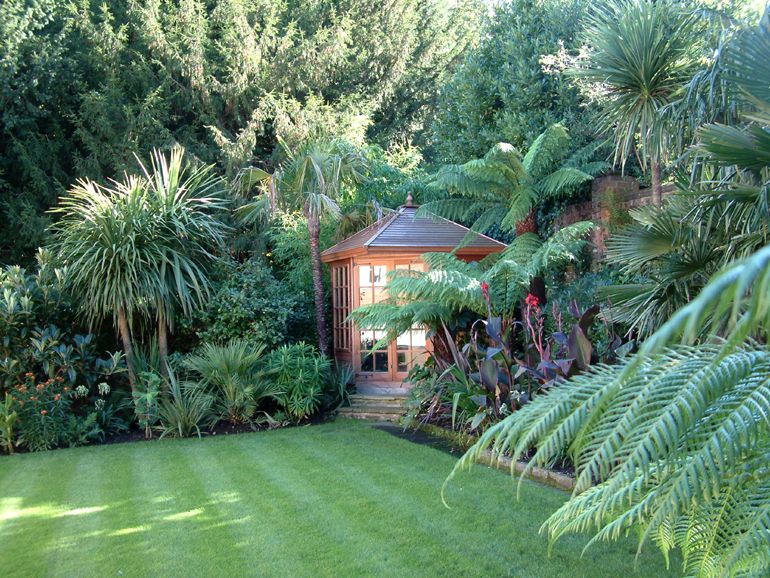 The more colorful and bright they are, the more you will feel like you are really in a tropical garden! So, don’t just stick with the usual flowering plants you see in your neighbor’s garden.
The more colorful and bright they are, the more you will feel like you are really in a tropical garden! So, don’t just stick with the usual flowering plants you see in your neighbor’s garden.
Go for those that have unique shapes and bright colors. One plant with beautiful blossoms that would look great in a tropical garden is the canna.
8. Add a water feature.
Your tropical garden will not be complete without water. This could be a pool area, a spa, a hot tub or even just a pond. If your space is really limited, then a fountain will do.
The sound of rushing water and its cold feel will complete the look of your tropical garden.
9. Add some sculptures and other decors.
Craig Reynolds Landscape
Finish the look by adding a beautiful sculpture, a huge rock and other features that you want to place in the garden. You can also add some structures like a Tiki bar or just extend the tropical feel into your porch by adding potted plants in it.
When you are done with the plants, don’t hesitate to decorate, decorate and decorate!
10. Do regular maintenance.
Elad Gonen
I know I mentioned that a tropical garden doesn’t really need high maintenance but it doesn’t mean that you wouldn’t maintain it at all. You must see to it that every plant in the garden is well so that they will grow healthy. Also, remove dried leaves and insects that may kill your plants.
You don’t have to do that every day but regular cleaning would be needed to keep the beauty of your garden.
The images above will surely inspire you to have your own tropical garden. But see to it that you will take note of the tips we have here. Aside from those mentioned, do not forget to add outdoor lighting. It could be a torch, a candle, and spotlights or down lights or any kind of lighting. This will greatly improve the feel of your tropical garden when night time comes. Feeling, excited? Start planning your garden now!
Tropical garden ideas – 10 tips to turn your garden into an oasis
(Image credit: Annaick Guitteny / Future)
Tropical garden ideas provide an easy way to give your garden an exotic look by blending hot, clashing colors with dramatic architectural foliage.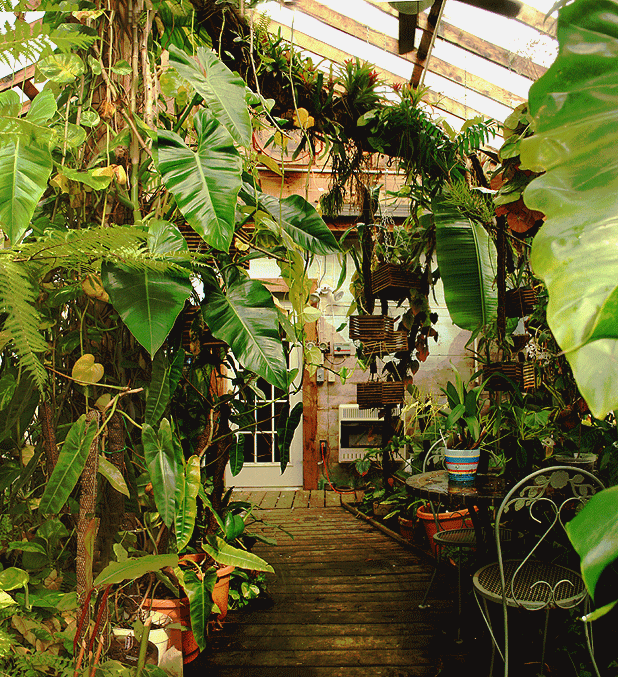 Gardens can start to look ragged by the end of July as many perennials begin to fade. A simple way to inject life into your garden borders is to go tropical.
Gardens can start to look ragged by the end of July as many perennials begin to fade. A simple way to inject life into your garden borders is to go tropical.
Buying garden-ready plants will give your garden an exotic vibe for the rest of summer. It’s an easy way to boost color and give your outdoor garden ideas another peak of interest that will last until the first frosts.
Tropical garden ideas – introduce the best plants and features
At this time of year most gardens are looking a little tired after their high-summer peak, but not those containing dramatic foliage plants, spiky specimens and vibrant flowering beauties from warmer climes. Mediterranean garden ideas really only start to get going in late summer and tend to hit their stride in mid-fall, long after plants associated with traditional displays have thrown in the towel.
These days, a tropical garden is a popular choice but it wasn’t always this way. Until the late 1980s few people grew exotics; that all changed with the publication of Exotic Gardening in Cool Climates, a book by London-based garden designer Myles Challis.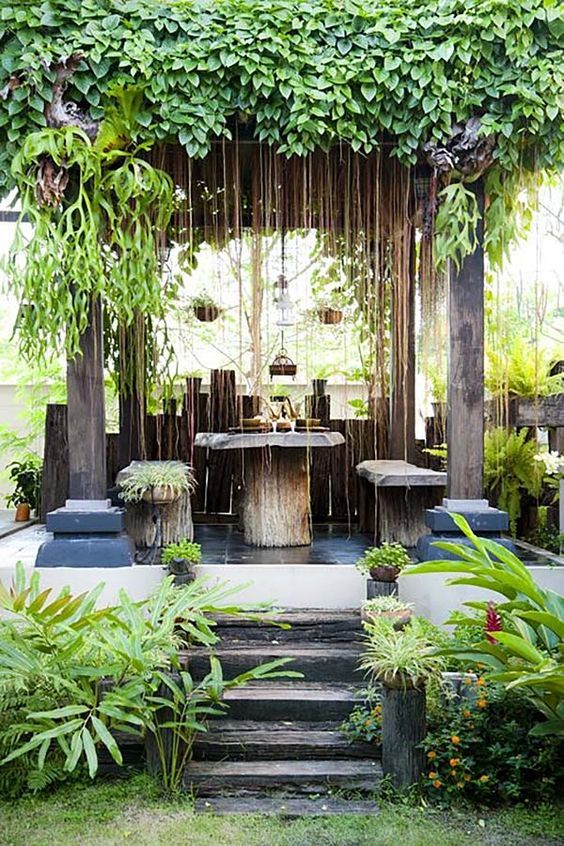 It sparked an interest in tropical plants and led many to give their outdoor spaces a jungle makeover.
It sparked an interest in tropical plants and led many to give their outdoor spaces a jungle makeover.
1. Source tropical plants
(Image credit: Photo by Nareeta Martin on Unsplash)
For an exotic look, don’t feel restricted in your plant choice. Simply look for plants that have characteristics of the tropics. It’s all about using dramatic, architectural foliage and showy flowers in hot, clashing colors. Some of the best tropical plants include; canna, phormium tenax, musa basjoo, black bamboo and tree fern.
2. Add vibrancy and height to garden borders
(Image credit: Photo by Christin Noelle on Unsplash)
When it comes to garden border ideas, aim for a mix of heights with tall, towering plants like bamboo and bananas providing a protective canopy for lower growing plants such as ferns and hostas. Dense planting will help create the feeling of a jungle. Planting flowers such as cannas, crocosmia and dahlias will give your border vibrancy.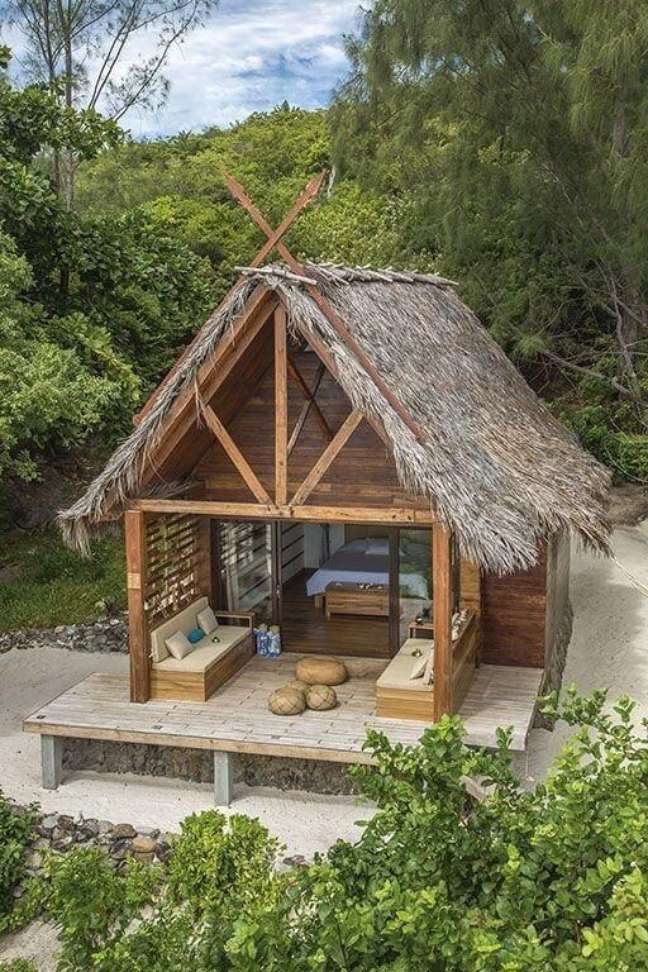 Dahlias will put on a dazzling display well into fall.
Dahlias will put on a dazzling display well into fall.
3. Take care of your tropical garden in the winter
Cannas provide architectural interest in summer borders
(Image credit: Photo by Ju Desi on Unsplash)
Many of the exotic style plants will need some protection over winter, but tender plants such as cannas, bananas and ginger lily should survive in milder areas if you mulch over the rhizomes or crown of the plant over winter. In colder regions, it’s best to lift the tubers and rhizomes.
4. Choose hardy tropical plants
(Image credit: Photo by Adam Anderson on Unsplash)
The alternative is to choose hardier plants that have a tropical look, such as fatsia japonica. Next year, you can build on your border by planting bulbs such as eucomis or crocosmia and sowing seeds of annual plants such as ricinus communis.
5. Create a hypnotic water feature
(Image credit: Annaick Guitteny / Future)
One of the best things you can do to help wildlife is to build a small garden pond or water feature, providing drinking water for birds and small animals, and a breeding ground and habitat for insects and amphibians.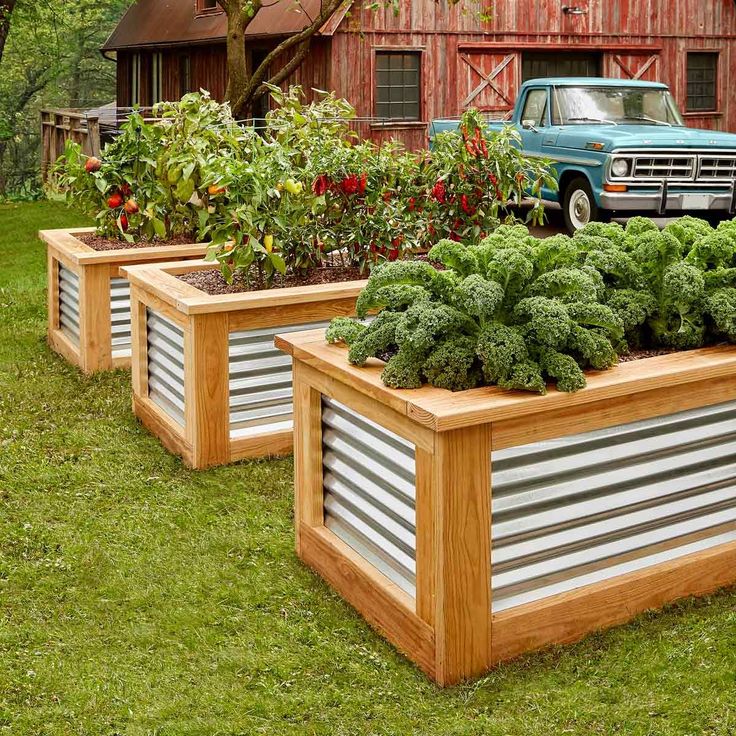 Site it somewhere sunny or in partial shade, and aim for one that’s at least 90cm deep on the centre for creates to shelter over the winter, with shallow sides to allow easy access for frogs and newts.
Site it somewhere sunny or in partial shade, and aim for one that’s at least 90cm deep on the centre for creates to shelter over the winter, with shallow sides to allow easy access for frogs and newts.
Keep the water healthy with a mix of submerged oxygenator plants to encourage as much wildlife as possible.
6. Think about positioning
(Image credit: Future / Simon Scarboro)
Tropical plants are best grouped together and placed in a sheltered spot out of strong winds, which may cause large leaves to shred. This is a particular problem with banana plants. Grouping them together will also create a microclimate, increasing humidity levels. Many of these plants prefer indirect light so leaves and flowers do not scorch.
7. Plant a tropical container garden
(Image credit: Future / Colin Poole)
Tropical plants are native to regions surrounding the Equator, and have growing requirements specific to their location. Many of them need warm, humid conditions, but they will grow in the US and UK with the correct care. Setting tropical plants in an attractive container garden allows you to display them outdoors in the summer. When choosing plants for a mixed container display, be sure they all have the same watering and compost requirements. This will ensure that the whole display thrives.
Setting tropical plants in an attractive container garden allows you to display them outdoors in the summer. When choosing plants for a mixed container display, be sure they all have the same watering and compost requirements. This will ensure that the whole display thrives.
If your budget can only stretch to a couple of tropical plants, group them with hot looking colorful native and Mediterranean plants to maintain the look. Pelargonium roses and agapanthus all work well. So grab an empty container and get scouting the garden centre – you’ll soon be enjoying a taste of the tropics in your own backyard.
8. Invest in a picture-perfect pergola
(Image credit: Future / Mark Bolton)
If you want to go to town in a tropical garden, create somewhere to sit and soak up the atmosphere. A pergola dripping with vines, raised decking enclosed with rope balustrades or a patio edged with rendered walls makes the perfect platform for arranging furniture.
‘Cantilevering a pergola over an outdoor kitchen looks lovely – and with supports only on one side – allows for freer movement around and underneath it,’ says Kate Gould. This creates more space for a variety of patio furniture ideas under your pergola.
9. Plant vertically in a tropical garden
(Image credit: Future / Mark Bolton)
Use garden fence ideas, walls and other upright surfaces to support a vertical garden of vibrant climbers that possess an exotic air, such as trumpet vines (campsis), passion flowers and star jasmine (trachelospermum).
Underplant taller specimens with spiky yuccas, fascicularia and puya, along with perennials such as acanthus, farfugium and silver spear (astelia chathamica), which forms 4ft (1.2m) tall clumps of sword-like, metallic leaves. Inject color with pineapple lilies, red-hot pokers and dahlias.
10. Create a tropical garden in a small space
(Image credit: Future / James Merrell)
You don’t need a huge garden to create an impactful tropical look – big leaves have greater impact in neat courtyard gardens. Cordyline and ferns are fine in containers. Passiflora – passion flower – will romp about with its roots growing in very little space.
Cordyline and ferns are fine in containers. Passiflora – passion flower – will romp about with its roots growing in very little space.
How can I make my garden look tropical?
Create a tropical garden with hardy palms, cordylines, bamboos and evergreen trees and shrubs with big leaves, such as loquat and euphorbia mellifera. Enhance the display with other leafy plants, like hardy bananas, melianthus major and the foxglove tree, whose leaves can measure up to 3ft (90cm) across when branches are chopped back hard.
Of course, it’s not just about plants. No tropical garden would be complete without a water feature. A pond, rill, wall-mounted water spout or similar type of feature will add sound, movement and character to the space.
What grows in a tropical garden?
Create a bold look in your back garden with exotic evergreens that provide low-effort drama and bold interest all year round. Here are some the best plants for a tropical garden.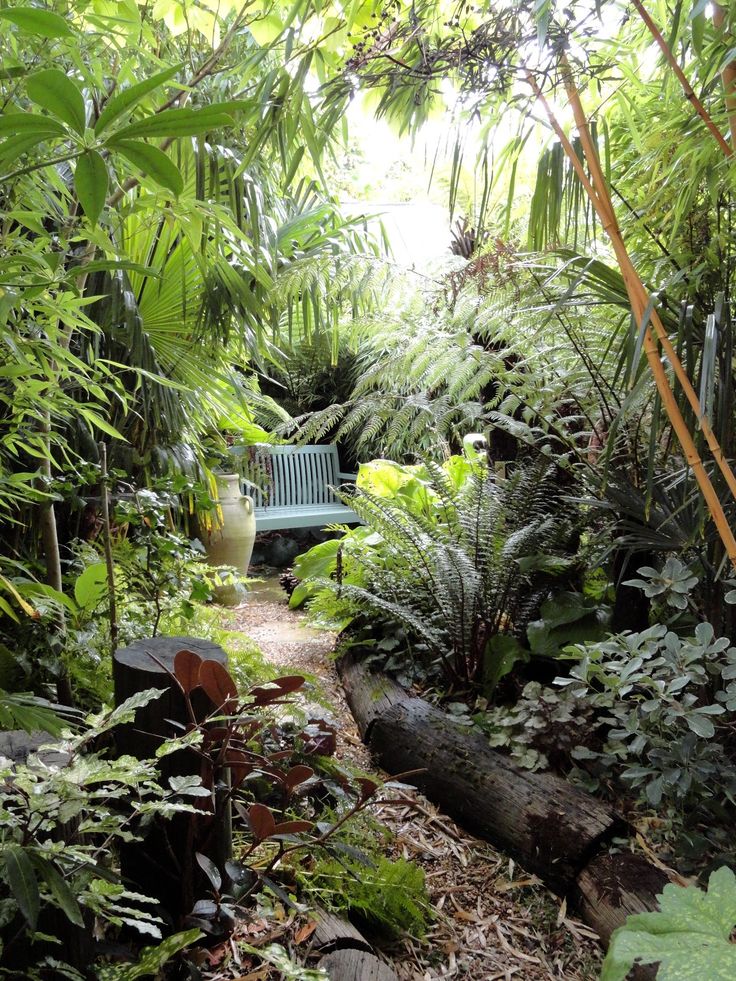
Trachycarpus fortunei
With the classic exotic loo, the chusan palm is hardy in US winter, even in show. It provides height, drama and shade. It’s slow-growing but reacher 15m eventually.
Dicksonia Antarctica
This is like a large fern on a stem, with huge lacy leaves. Grow it in shade. It’s semi-evergreen but will need protection from frost.
Canna
They ramp up the tropical vibe in your space, with colorful foliage and flowers in hot reds and oranges. With strong vertical accents, they’ll flower all summer, but need winter protection.
Jennifer is the Digital Editor at Homes & Gardens. Having worked in the interiors industry for a number of years, spanning many publications, she now hones her digital prowess on the 'best interiors website' in the world. Multi-skilled, Jennifer has worked in PR and marketing, and the occasional dabble in the social media, commercial and e-commerce space. Over the years, she has written about every area of the home, from compiling design houses from some of the best interior designers in the world to sourcing celebrity homes, reviewing appliances and even the odd news story or two.
How to create a tropical style garden tips and tricks for gardeners
Maria Maria 13 August 2013
Tropical gardens have long been regarded as romantic yet exotic places in many parts of the world and can add charm to any home. We don’t even know what they have more - convenience and unusualness in terms of relaxation or creativity and decorativeness to ennoble the territory.
Fortunately Arrangement and design of a garden in tropical style is not as difficult as it seems. In addition, if you plan ahead for a tropical-style yard, it will not require too much maintenance. Even more so, if certain plants cannot be grown outdoors due to certain climatic conditions, for example, living quarters or ordinary greenhouses can be used.
If you've traveled to Southeast Asia, northern Australia, the Caribbean or the Pacific Islands, or Central America or Equatorial Africa and have the idea of reproducing the growth of tropical plants outside the tropical or subtropical zone, we hasten to please you: there are certain ways to achieve something like this, in order to preserve the memory of their achievements and experiences for a longer time, or simply enjoy the beauty and peace of such a garden.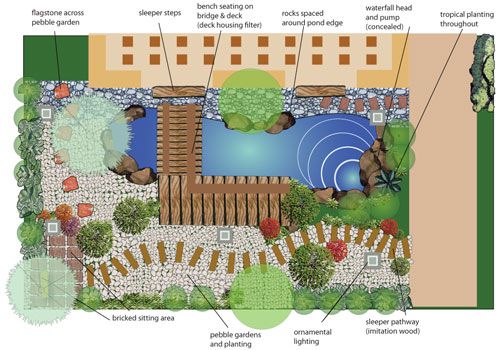 nine0003
nine0003
Steps to create a tropical garden
Explore the climate in your area . In most areas where the climate is dry and hot or even arid, you can grow a large number of tropical plants, but you will have to choose the right species, because some of them are extremely moisture-loving, which means that in drought-prone areas, they will grow all it's not worth it.
Generally speaking, tropical plants prefer a hot (at least 30 degrees Celsius) and humid climate, which should be as stable as possible throughout the year for optimum plant growth and development. In principle, tropical plants may well acclimatize in any warm climate, but in the absence of the usual growing conditions, growth will be much slower, and flowering will be much poorer. Some tropical and subtropical plants also survive in places where autumn is replaced by moderate frosts, so that the feeling that you are in tropical latitudes will not leave you throughout the year. Thanks to these bastards.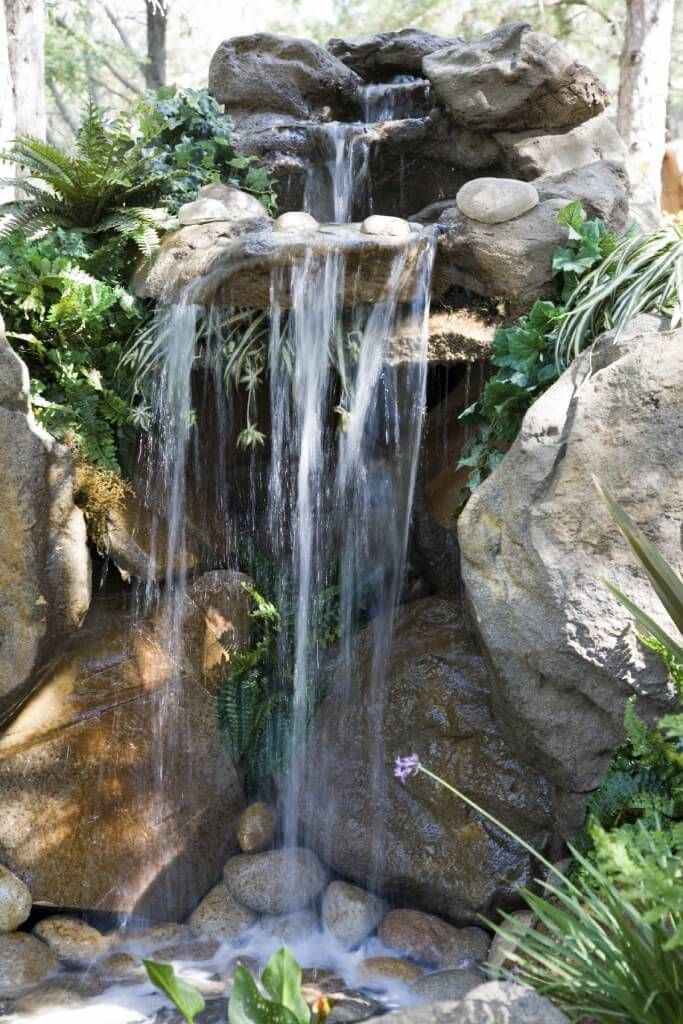 If the frosts in your area are quite severe, or the winters are mild but long, and the summer periods are rather short, you will need to grow tropical plant species indoors. nine0003
If the frosts in your area are quite severe, or the winters are mild but long, and the summer periods are rather short, you will need to grow tropical plant species indoors. nine0003
What tropical plants can be planted
Ideally, true tropical plants, for example, ferns and orchids, even diffused light is sufficient, despite their extreme light-loving nature, but they are very demanding on air temperature. We offer you the simplest solution - to plant such plants in containers or planters. Such a container or planter can be planted in the garden without taking out the plants, and covered with mulch. When the colder season comes, which poses a threat to the plant, the container with the plants can be moved to a room or a more suitable place. nine0003
Research the type and composition of your soil to prepare it properly. Tropical plants prefer good, rich soil with good drainage.
If the soil in your area is sandy or heavy, this can be corrected by adding compost and a thick layer of mulch (at least 15 centimeters) and other soil enriching materials. Remember: the soil mainly determines whether your garden will grow luxuriantly or freeze and gradually come to naught. Therefore, the issue of soil preparation should be treated with maximum attention so as not to subsequently come to a zero result. nine0003
Remember: the soil mainly determines whether your garden will grow luxuriantly or freeze and gradually come to naught. Therefore, the issue of soil preparation should be treated with maximum attention so as not to subsequently come to a zero result. nine0003
Ironically, most green natives of the rainforest are quite capable of surviving on very poor soils with fairly small fertile layers, although soil poverty in the tropics is usually due to stronger plant species with well-developed root systems absorbing the main amount of nutrients. Ideally, any soil used to grow tropical and subtropical plants should be well-drained, as tropical inhabitants do not like stagnant soil moisture. Especially when it comes to the foot of plants and their root system, because high humidity and stagnant processes are a direct path to the development of pathogenic flora of fungal origin, as well as mold on the plants themselves as well. Some species like rough, mulch-like soils such as orchids and bromeliads, but most still need soils with constant drainage and, preferably, with a sufficient amount of nutritious organic matter. nine0003
nine0003
Many species in rainforest environments rely on debris and leaf litter to be decomposed by insects and various microbes. And in terms of fertilizer, animal excrement helps them. That is why they have a hard time recovering from cleaning or erosive processes.
In dry areas the amount of water is usually either very limited or it evaporates too quickly. Therefore, we suggest that you apply organic fertilizers enriched with nitrogen to the soil, after which the soil is well mulched (the mulch layer should be about fifteen centimeters) and watered abundantly. After two to three weeks of adequate watering (a layer of mulch will minimize evaporation, but additional watering at least once a week will bring many benefits to your plants), the fertilizer will begin to break down in the soil, enriching it with various microelements, after which the soil is considered ready for planting. nine0003
It is recommended to renew the mulch every year until the plants are old enough to make their own mulch.
Planning a tropical garden
When planning your garden , consider not only the functionality, but also the practicality of the project. In suburban gardens, grassy areas like lawns or lawns are a characteristic feature. But in arid and desert areas, they are very difficult to maintain in proper form. As an alternative, we suggest that you choose shaded areas for such lawns. If you still can’t grow a beautiful lawn, you can resort to the help of artificial turf. Do not rush to refuse, because the quality of modern materials allows them to look quite decent. For the area where you plan to install a table with chairs, choose gravel in reddish hues - this color contrast is very beneficial for the overall look of your garden. nine0003
Ideally, you should initially focus on your preferences and ambitions: will the garden serve a purely aesthetic function, or are you planning to use it for relaxation, or maybe as a playground for children and pets?
First, study the various pictures , of which there are a great many, both in books and on the Internet.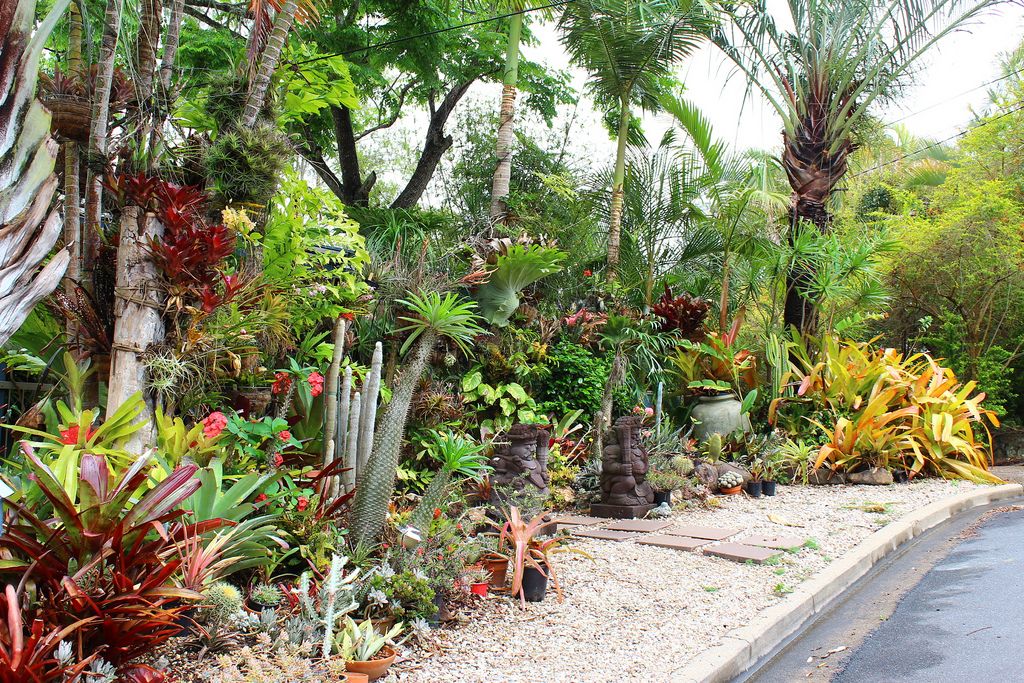 Save your favorite examples of garden design, so that you can look at them again and finally make your choice. If it is impossible to grow any plants in your area due to climatic conditions. Try to find their more unpretentious counterparts, or at least similar specimens that the climate of your area will be tough for. nine0003
Save your favorite examples of garden design, so that you can look at them again and finally make your choice. If it is impossible to grow any plants in your area due to climatic conditions. Try to find their more unpretentious counterparts, or at least similar specimens that the climate of your area will be tough for. nine0003
Nevertheless, we insist that residents of areas with a dry and hot climate take care of shading their plots in advance. This can be achieved by planting trees with powerful crowns - Australian jasmine, and tipana, and rosewood, and carob, and poinciana, as well as desert plants (for example, island palms - most of them are home to North Africa or the desert areas of America; they may have thorns or prickles, so choose carefully and carefully) and so on. nine0003
Make sure you take your plant selection seriously as most of the plants tolerant to your weather conditions are probably invasive destructive species, so in a couple of years you won't be happy that you ever then decided to plant them.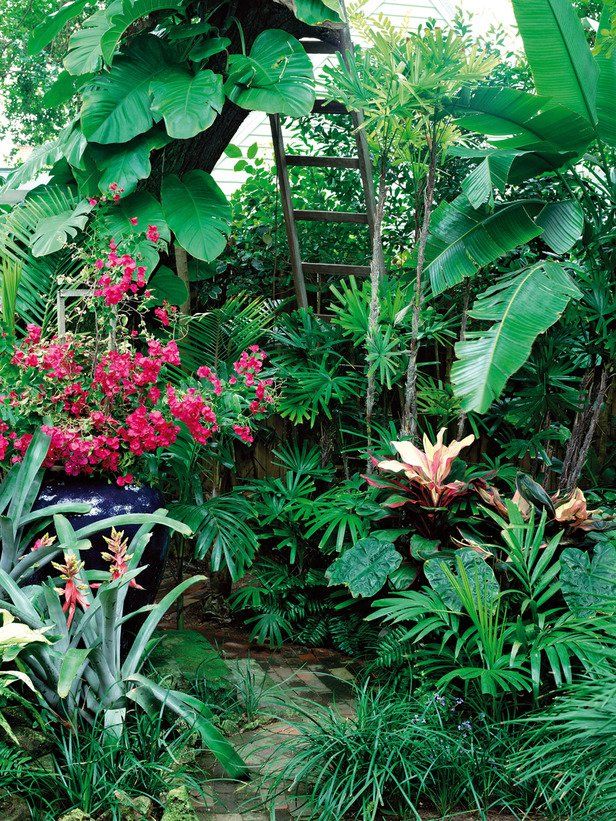
Take care to shade before planting, as they usually do not survive unprotected or grow too slowly for the first few years and the hot sun will scorch or burn their foliage. nine0003
Once you have provided adequate shade for your future tropical garden. We turn to the choice of undergrowth species. Today it is one of the most fashionable trends in the world of gardening. Some desert tropical plants suitable for growing as shrubs are cicadas, agaves, flax, cacti, succulents, jasmine, yucca, palm trees, and others. There are also drought-resistant plants - hibiscus, ferns, orchids, bromeliad species, as well as strelitzia.
Ampel or hanging gardens s work great in arid desert climates. But, of course, provided that they are enriched with materials that retain moisture, for example, water-gel crystals or organic matter. Such plants, and materials, are best placed away from the open sun, and also away from the effects of winds, which are quite capable of drying up the soil.
If your climate is windy , whether hot, dry or moderate, install fences or other walls to reduce the harmful effects of winds. You can use plants as barrier materials, such as bamboo, lily-pili, bougainvillea or hibiscus, which, in addition to their barrier function, will also add decorativeness to your garden. nine0003
Plants that can be damaged by winds include various types of bananas - it is better not to plant them in windy areas, because even with protection they will never grow fully in such conditions. And the appearance obviously will not please the owners.
It is also important to make sure there is good air movement in the patch, which is essential for optimal hardwood growth. By the way, a fairly common problem in greenhouses and greenhouses is the thinning of the branches and their increased fragility - this is due precisely to insufficient air circulation. In addition, air circulation reduces the likelihood of nasty things like mold and pests.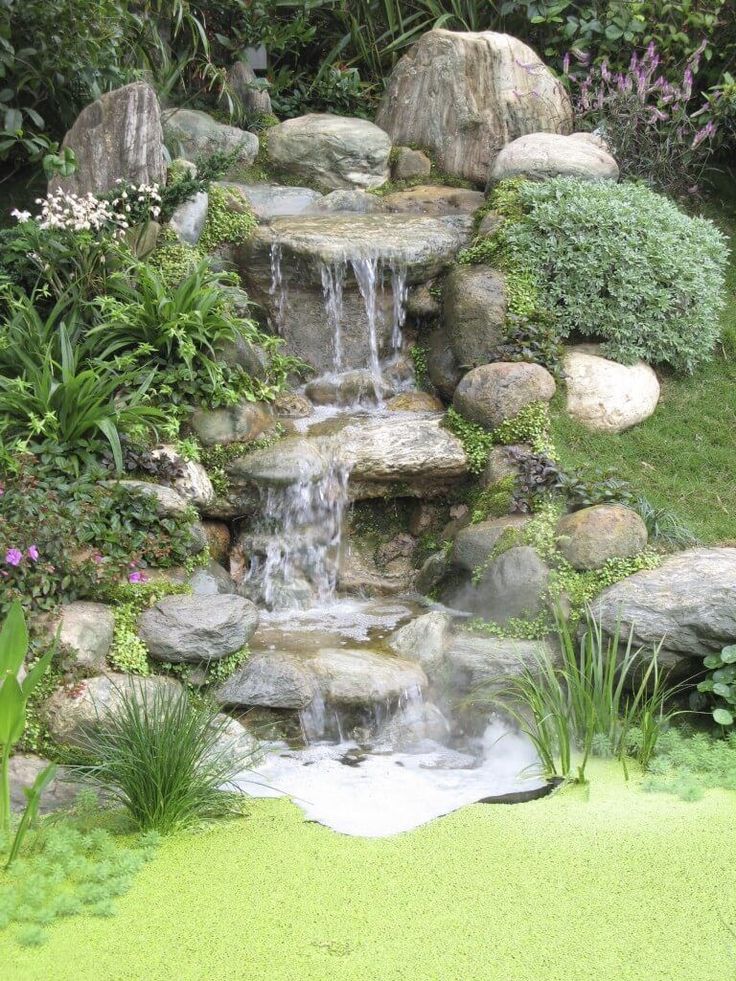 For most bromeliad species, good circulation of air masses is simply necessary to stay in good, so to speak, health. nine0003
For most bromeliad species, good circulation of air masses is simply necessary to stay in good, so to speak, health. nine0003
We are waiting for the cold weather in the tropical garden
Get ready for the cold weather! It is advisable to develop a strategy in advance in order to protect yourself from the risk of losing the entire garden. Thick and dense plantings will protect your plants from piercing cold winds and frosts. To do this, use palm trees that tolerate light frosts well, as well as bamboo plantations, as well as tree ferns. In general, for the best protection, your plantings should resemble a bunch of penguins, which, by the way, are also grouped together for the purpose of protection from the cold. nine0003
In continuation of the story about frost-resistant plants, let's talk about undergrowth species. We are talking about the ginger family, lilies, ferns and some palm species. By the way, most varieties of hibiscus from this subgroup are also quite capable of light frost.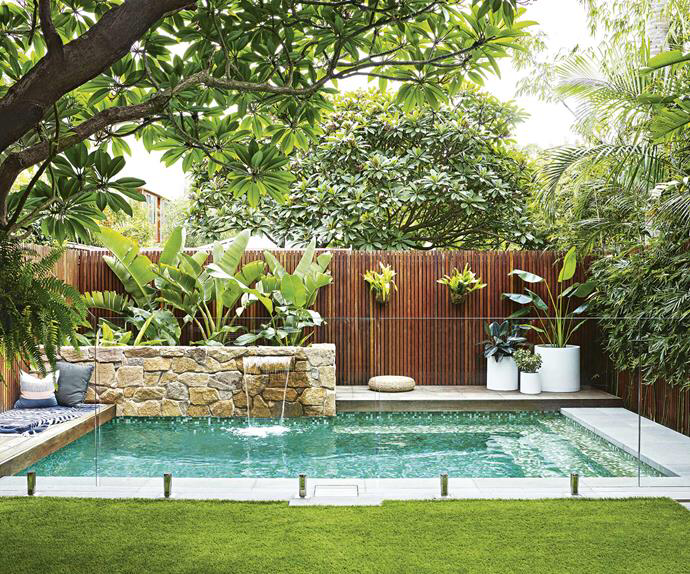 Plus, they look great in any garden.
Plus, they look great in any garden.
Mulch your plants as densely as possible , as thick layers of mulch minimize the chance of frost getting to your plants' roots, which simply can't take it. Especially sensitive, thin or not yet strong breeds can be insulated with covering materials, using, for example, foam or plastic shelters. If you can't bring them to the dorm, be sure to keep them warm at night. nine0003
In areas subject to prolonged hard frosts, conservatories or greenhouses are perhaps the only way to keep tropical plants at their best, as there are hardly many species so resistant as to easily survive prolonged frosts.
For cold climatic zones, it is customary to first of all focus on the condition of plants, based on the color and texture of the leaves. Since most tropical plants are in dire need of both moisture and heat for normal flowering, so without providing them with these benefits, you are unlikely to wait for flowering in principle.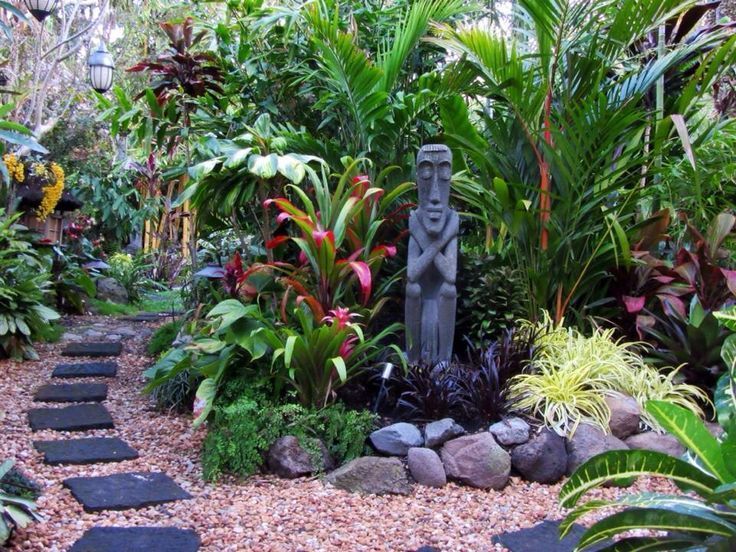 Give preference to hydrangeas, magnolias and camellias. By the way, if you want to give hydrangeas new shades of color, use the good old advice: to get a soft pinkish tint, add lime (dolomite) to the soil, and for blue flowering, mix the soil with a little crushed slate. nine0003
Give preference to hydrangeas, magnolias and camellias. By the way, if you want to give hydrangeas new shades of color, use the good old advice: to get a soft pinkish tint, add lime (dolomite) to the soil, and for blue flowering, mix the soil with a little crushed slate. nine0003
For a unique look in your garden, try incorporating a living plant sculpture or using the sculptured plants individually. The composition may include several stumps, as well as ferns, orchids, and epiphytes.
By the way, bromeliads, in principle, are probably the most surprising find for tropical gardens, because they easily grow everywhere: in containers, pots, planters, in the open field, and even when mounted in trees or wall panels - the main thing is to they didn't freeze! In addition, this species is characterized by an extraordinary variety of colors, shapes, types and sizes. nine0003
With other species and a good imagination, you can also create a hedge or topiary that can bloom continuously and responds well to pruning.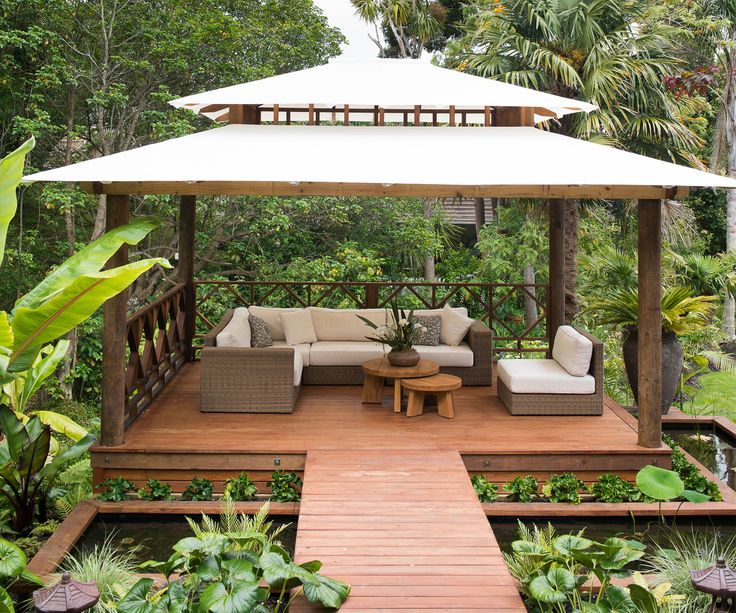 Hibiscus, which has a large outstanding flowering, is well suited for creating hedges. Excellent examples are also many types of palms - for example, the strong silver Bismarck palm. Some palms produce red, orange and purple new shoots, although their reproduction and development can be difficult outside the tropical zone. However, palms have single stems, and there are also fused ones, the color of fondant palm (very sensitive to cold) or the type of golden palm, which are quite hardy. Some small shrub palms are very attractive - this is the lady palm variety, which often has a very variegated color. nine0003
Hibiscus, which has a large outstanding flowering, is well suited for creating hedges. Excellent examples are also many types of palms - for example, the strong silver Bismarck palm. Some palms produce red, orange and purple new shoots, although their reproduction and development can be difficult outside the tropical zone. However, palms have single stems, and there are also fused ones, the color of fondant palm (very sensitive to cold) or the type of golden palm, which are quite hardy. Some small shrub palms are very attractive - this is the lady palm variety, which often has a very variegated color. nine0003
Create a tropical setting
If you can afford it, invest in colorful banners and flags, as well as garden sculptures (for example, a Buddha statue, Polynesian, Balinese and other types of sculptures), as well as water features.
Of course, it is desirable to enrich the appearance of your garden with stone elements, but you can also replace them with fiberglass or artificial boulders, which are not only very affordable, but also easy to install and maintain.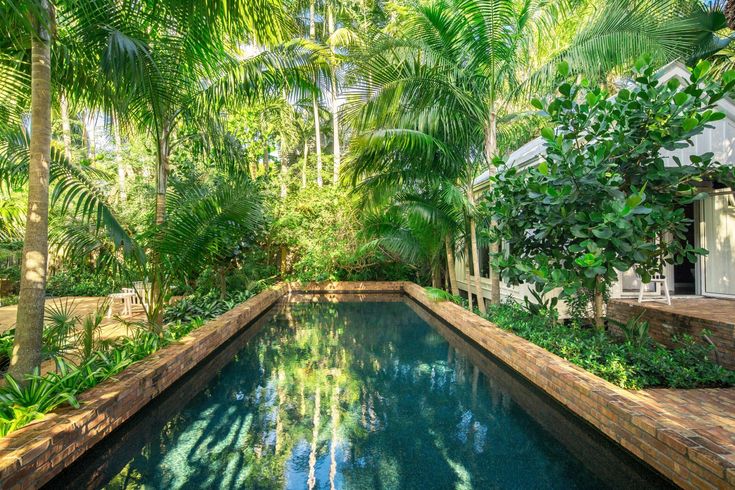 nine0003
nine0003
If you already have large stones in your garden, but they seem trivial and unattractive to you, you can clean and wash them well, and when they are completely dry, cover their surface with a thin layer of glue, and then sprinkle a little red or brown ocher or fine colored sand to achieve the most unusual and contrasting appearance. When the glue base dries, the stone looks exactly like it was just brought from a real rainforest. nine0003
Candles, lanterns and torches can also spice up your garden and make it look like a jungle.
Regular maintenance, so to speak. After installation, it will consist in ensuring a constant level of the mulch layer (which is updated annually anyway), as well as removing old plant residues of palms, inflorescences. In addition, spend unplanned pruning more often: believe me, each of them will stimulate the growth of plants with renewed vigor. Ideally, it is also worth following a clear demarcation of the garden in terms of zoning, in order to create an impression of formal solemnity in your garden.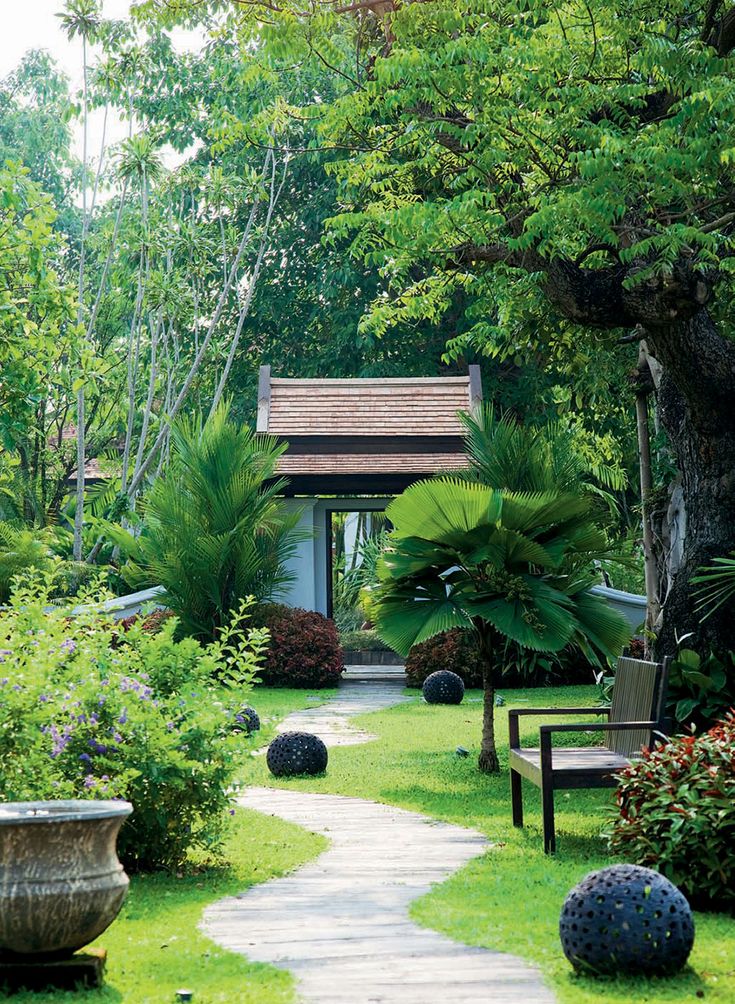 You're still not walking in the real jungle, right? nine0003
You're still not walking in the real jungle, right? nine0003
Tropical plants that can be dug up before the onset of winter should not be removed from the soil immediately before or after frost - such actions can be fatal to plants. It is best to do this when the days are still quite warm - so high is the likelihood that next year the plants will be in perfect order after landing on a permanent place of growth.
Palm trees should not be touched at all - you just need to remove dead leaves, so before planting a palm tree, try to choose a plant that gets rid of dead weight on its own - for example, a coconut palm from Argentina does not shed dead leaves for quite a long time, which, of course, significantly affects its decorative characteristics .
Keep your garden paths free of moss, otherwise they become too slippery and therefore unsafe. In addition, clean paths always look more neat, well-groomed and attractive. nine0003
If you also have a lawn, when removing old leaves from palm trees, as well as ferns, as well as ginger trimmings after cooking, you can place them directly on the lawn - you still chop them when you cut it.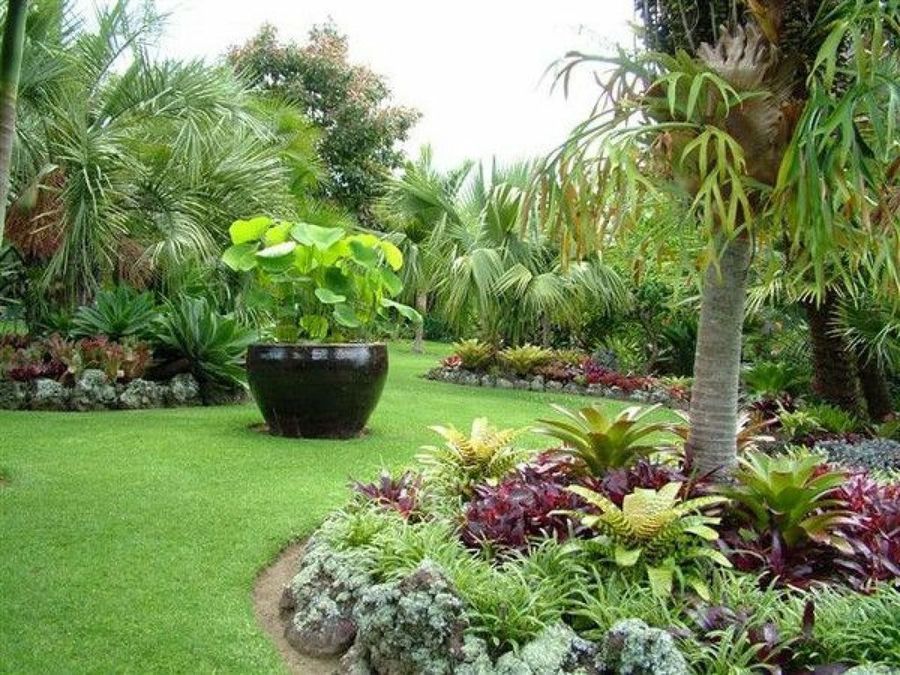 Don't rush to toss the resulting vinaigrette out of your lawn mower's grass collector - it's a great base for compost and even just a great mulch pad, which is indispensable for enriching the soil before the next season.
Don't rush to toss the resulting vinaigrette out of your lawn mower's grass collector - it's a great base for compost and even just a great mulch pad, which is indispensable for enriching the soil before the next season.
Interior tropical garden | Tropical interior design
The life of every person has a connection with the plant world, but as a result of the active development of cities, megacities, the construction of industrial enterprises, there are few green spaces left near people. In the summer, spring, autumn there is an opportunity to go out of town to the country, but when winter comes, cold, a person really lacks greenery. In this case, an excellent alternative is a tropical garden in the interior of an apartment or house.
Nuances to consider when creating a tropical garden. nine0013
In the process of creating a tropical garden, several important aspects must be taken into account:
- the style of the garden;
- selection of plant species;
- room where it will be located.
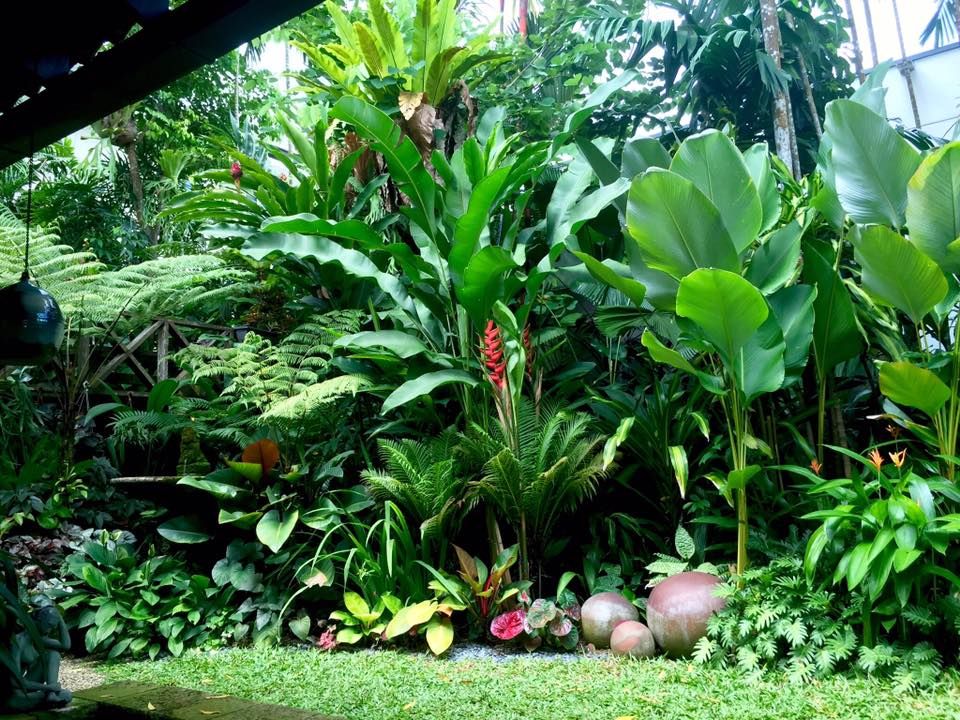
Equally important is given to furniture, design elements, small architectural forms.
Garden style and selection of plant species.
The most popular type of home garden is tropical. It is often used for heat-loving plants that grow in tropical latitudes in their natural environment: ficus, begonia, dieffenbachia, philodendron, alocasia, dracaena. In the interior design, you can harmoniously fit such types of plants as tropical liana, podranea, gedichium, gloriosa, caladiums, begonias, orchids. In order to create a tropical garden, you need a room with a humidity of at least 70%, a temperature of +16 to +26 degrees. nine0003
The variety of tropical plants provides a unique opportunity for a professional phytodesigner to create a real piece of paradise even in a small room. In some tropical gardens, you can find amazing butterflies, exotic birds.
It is important to understand that if the interior design of an apartment or house has a tropical corner, you will need to devote a lot of your precious time to it, allocate funds for the purchase of plants, and provide competent care.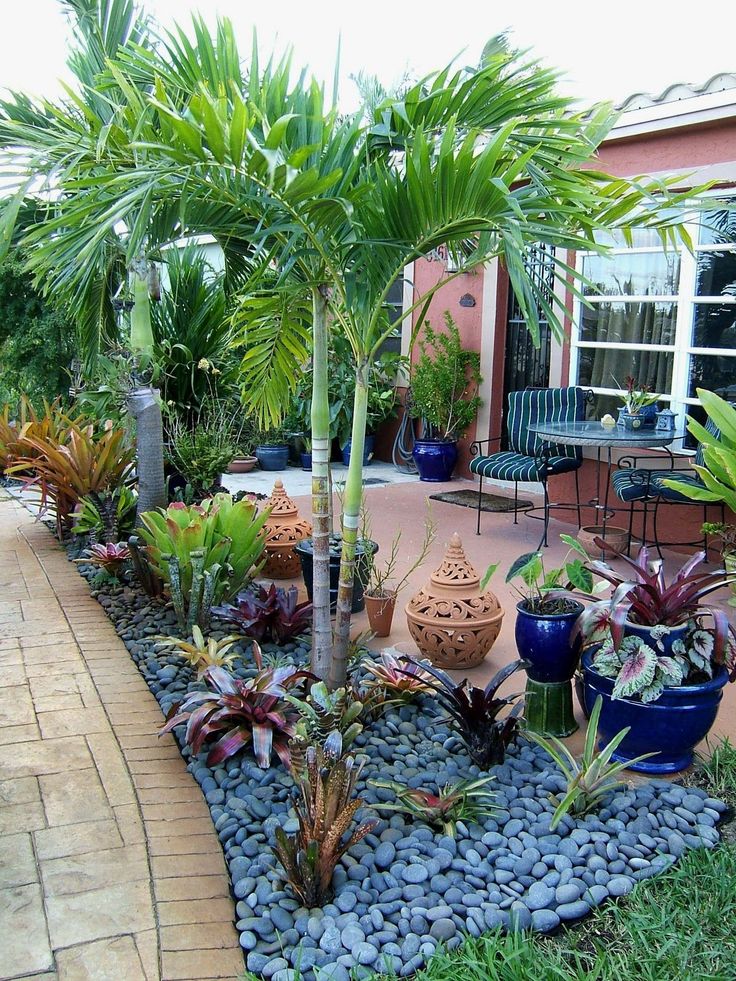 In order for the delicate tropical vegetation, which is afraid of even a small temperature difference, to please you all year round, life support systems must function without failures - even the slightest cold, drafts can destroy it. In addition, the design of the studio apartment should be designed in such a way that the direct rays of the sun do not fall on the tropical corner, as this negatively affects the plants. It is important to bear in mind that some plants prefer shade, others rather bright lighting, but all of them are united by a love of moisture. nine0003
In order for the delicate tropical vegetation, which is afraid of even a small temperature difference, to please you all year round, life support systems must function without failures - even the slightest cold, drafts can destroy it. In addition, the design of the studio apartment should be designed in such a way that the direct rays of the sun do not fall on the tropical corner, as this negatively affects the plants. It is important to bear in mind that some plants prefer shade, others rather bright lighting, but all of them are united by a love of moisture. nine0003
Choice of space for the garden.
The interior design of the room where it is planned to equip a tropical garden is made using special materials. The garden can be designed in a variety of ways, such as tropical jungle, tropical rainforest imitation, or in combination with a beautiful water garden. All this is at the discretion of the owner of the apartment, house. It will not be possible to stay in such a room for a long time due to the increased humidity of the air, temperature, but here you can really relax, relax, gain strength, energy, and cheer yourself up.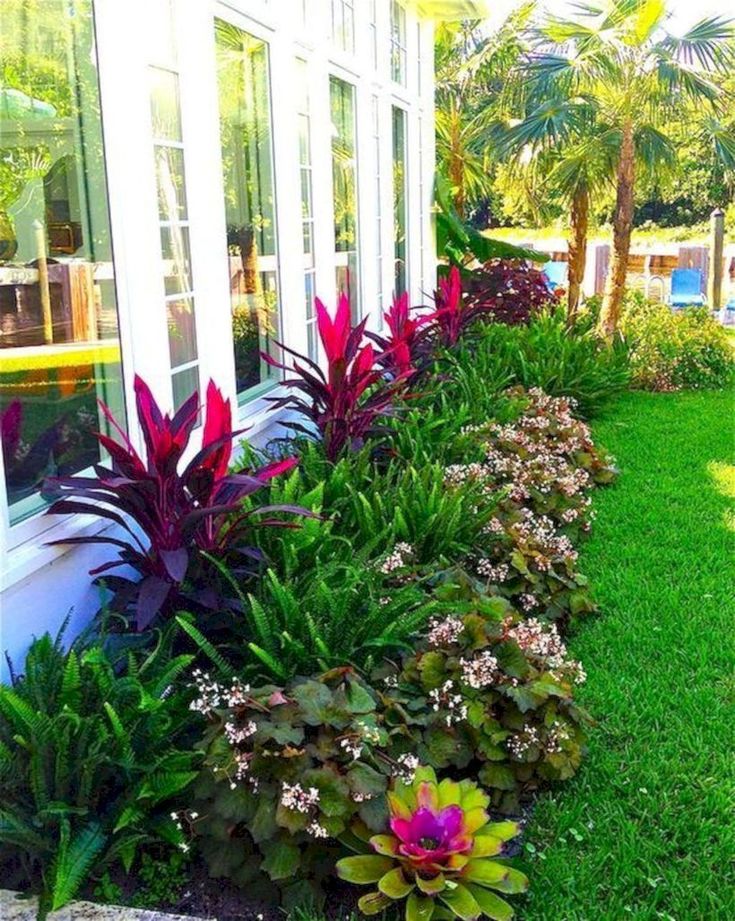 That is why such a garden is used as a walking. nine0003
That is why such a garden is used as a walking. nine0003
It is important to understand that if you are planning to set up a tropical garden, you will need a specially equipped room for this. However, if you still decide to make a tropical corner as part of your living space, you will need to carefully select plants that can grow normally with low levels of humidity. Such plants include succulents, ficuses, fatsia.
Regardless of where you decide to set up a tropical garden, consider the conditions that you have. In this case, you can create a stunning studio apartment design with a magnificent tropical corner that will delight you all year round. nine0003
Japanese style in the interior
Europeans have been interested in Japanese culture for several centuries, trying to adopt some...
Tropical motifs in the interior
Tropical style is becoming more and more popular these days.